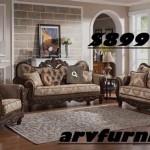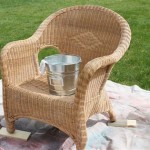Cleaning Mildew Off Wood Furniture
Mildew, a common type of fungus, thrives in damp, poorly ventilated environments and frequently appears as a powdery or fuzzy growth on surfaces. Wood furniture, particularly in humid climates or areas with poor air circulation, is susceptible to mildew infestation. Understanding the causes of mildew, identifying its presence, and implementing effective cleaning methods are crucial for preserving the integrity and appearance of wood furniture. This article provides a comprehensive guide to cleaning mildew off wood furniture, emphasizing preventative measures and appropriate cleaning techniques.
Identifying Mildew and Differentiating it from Mold
Before initiating any cleaning procedure, accurate identification of the growth on the wood furniture is essential. Mildew typically presents as a flat, powdery, or slightly fuzzy growth, often white, gray, or yellowish in color. It tends to be less deeply rooted than mold and easier to remove. Mold, on the other hand, often exhibits a more textured, raised appearance and can penetrate deeper into the wood. Mold can also present in a wider variety of colors, including black, green, and brown.
A simple test to distinguish between mildew and dirt involves wiping the affected area with a damp cloth. If the discoloration wipes away easily, it is likely mildew. If the discoloration is more stubborn and ingrained, it could be mold or another type of stain. Proper identification will dictate the appropriate cleaning approach. When dealing with extensive or deeply embedded mold growth, professional assessment and remediation may be necessary.
Essential Supplies and Safety Precautions
Prior to beginning the cleaning process, gathering the necessary supplies is crucial. This includes:
- Soft cloths or sponges
- A soft-bristled brush (old toothbrush or detailing brush)
- Protective gloves
- Eye protection
- White vinegar
- Water
- Mild dish soap
- Spray bottle
- Wood cleaner or furniture polish (optional, for finishing)
- Dehumidifier (for preventative measures)
Safety is paramount when dealing with mildew. Always wear protective gloves and eye protection to prevent skin and eye irritation. Work in a well-ventilated area to minimize exposure to airborne spores. If you have respiratory sensitivities or allergies, consider wearing a mask during the cleaning process.
Step-by-Step Cleaning Process
The following steps outline an effective method for cleaning mildew off wood furniture:
- Preparation: Move the furniture to a well-ventilated area, preferably outdoors if weather permits. This will help prevent the spread of spores indoors. If moving the furniture is not possible, open windows and doors to ensure adequate ventilation.
- Dry Cleaning: Use a soft brush or vacuum with a brush attachment to remove any loose mildew or debris from the surface of the furniture. Work gently to avoid scratching the wood finish. Pay particular attention to crevices, corners, and areas with intricate details.
- Vinegar Solution: Create a cleaning solution by mixing equal parts white vinegar and water in a spray bottle. Vinegar is a natural disinfectant and effective mildew killer.
- Application: Lightly spray the affected areas with the vinegar solution. Avoid oversaturating the wood, as excessive moisture can cause damage.
- Scrubbing: Using a soft cloth or sponge, gently scrub the mildew-affected areas. For stubborn mildew or hard-to-reach areas, use a soft-bristled brush. Work in a circular motion, applying light pressure to avoid damaging the finish.
- Rinsing: Wipe the furniture with a clean, damp cloth to remove any vinegar residue. Ensure the cloth is wrung out well to prevent excessive moisture.
- Drying: Allow the furniture to air dry completely. Positioning it in direct sunlight can further aid in drying and help kill any remaining mildew spores. If drying outdoors is not possible, use a fan to circulate air around the furniture.
- Inspection: Once the furniture is dry, inspect it carefully for any remaining mildew. Repeat the cleaning process if necessary.
- Finishing (Optional): After the furniture is completely dry and mildew-free, apply a wood cleaner or furniture polish to restore the finish and protect the wood. Follow the manufacturer's instructions for application.
Dealing with Stubborn Mildew
In some cases, mildew may be particularly stubborn and require more aggressive cleaning methods. Consider these alternative approaches if the vinegar solution proves insufficient:
- Dish Soap Solution: Mix a small amount of mild dish soap with water to create a soapy solution. Use this solution to clean the affected areas, following the same scrubbing and rinsing procedure as with the vinegar solution. Ensure all soap residue is thoroughly removed.
- Baking Soda Paste: Create a paste by mixing baking soda with water. Apply the paste to the mildew-affected areas and let it sit for a few minutes. Gently scrub with a soft cloth or brush, and then rinse thoroughly. Baking soda is a mild abrasive that can help remove stubborn mildew without damaging the wood.
- Bleach Solution (Use with Caution): As a last resort, a diluted bleach solution can be used. Mix one part bleach with ten parts water. Wear gloves and eye protection and work in a well-ventilated area. Apply the solution to the affected areas, let it sit for a short period, and then rinse thoroughly. Bleach can discolor or damage wood finishes, so it is crucial to test the solution on an inconspicuous area first. Proper disposal of bleach-contaminated cleaning materials is essential.
Preventative Measures to Inhibit Mildew Growth
Preventing mildew from returning is as important as cleaning it. The following preventative measures will help inhibit mildew growth on wood furniture:
- Improve Ventilation: Ensure adequate ventilation in areas where wood furniture is located. Open windows and doors regularly to allow air to circulate.
- Reduce Humidity: Use a dehumidifier to maintain a lower humidity level, particularly in damp environments such as basements or bathrooms. Aim for a humidity level below 60%.
- Regular Cleaning: Regularly clean wood furniture with a damp cloth to remove dust and dirt. This will help prevent the accumulation of organic matter that can support mildew growth.
- Proper Storage: When storing wood furniture, ensure it is clean and dry. Wrap it in breathable materials such as cotton sheets or blankets. Avoid storing furniture in damp or poorly ventilated areas.
- Sunlight Exposure: Exposing wood furniture to direct sunlight periodically can help kill mildew spores.
- Protective Coatings: Applying a protective coating such as varnish or sealant can help prevent moisture from penetrating the wood and creating a favorable environment for mildew growth.
Additional Considerations for Specific Wood Types and Finishes
The type of wood and its finish can influence the cleaning approach. For example, untreated or unfinished wood is more porous and susceptible to moisture damage than wood with a protective finish. When cleaning unfinished wood, use minimal moisture and allow it to dry thoroughly. Avoid using abrasive cleaners that can scratch the surface.
For antique furniture or pieces with delicate finishes, exercise extreme caution. Test any cleaning solution on an inconspicuous area before applying it to the entire piece. Consider consulting with a professional furniture restorer for guidance on cleaning and maintaining valuable or delicate wood furniture.
When dealing with painted wood furniture, be mindful of the paint's integrity. Avoid using harsh chemicals or abrasive cleaners that can damage or remove the paint. A mild soap and water solution is generally sufficient for cleaning painted wood surfaces.
Regular inspection of wood furniture for signs of mildew is crucial for early detection and prevention. Addressing mildew growth promptly will help minimize damage and preserve the beauty and longevity of the furniture. Consistent preventative measures and appropriate cleaning techniques are essential for maintaining mildew-free wood furniture.

Remove Mold Mildew From Furniture Diy Stop The Stink Musty Moth Balls Youtube

How To Remove Mold From Wood Furniture Rescue One Restoration

How To Remove Mold From Wood Furniture For Your Home Q

Tips For Cleaning Mold From Your Wood Furniture

How To Clean Mold Mildew Off Wood Patio Furniture Youtube

How To Remove Toxic Black Mold From Wood Youtube

How To Kill Mold On Wood And When Call A Professional This Old House

How To Remove Mold From Wood Furniture In 30 Minutes Angi

Mold On Furniture The Causes And Prevention Methods Environix

Is Mold On Wood Furniture Dangerous




